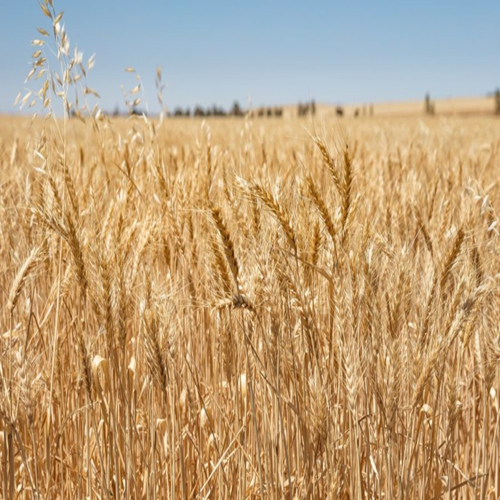Wheat cultivation in Africa at risk of fungal disease

A new study by the Technical University of Munich warns that the wheat blast fungus, Magnaporthe oryzae, could threaten up to 75% of wheat cultivation in Africa. The disease, already affecting South America, Asia, and East and southern Africa, destroys entire fields. Climate change exacerbates its spread. Africa spends $85 billion annually on food imports, with 15% for wheat. Zimbabwe, wheat self-sufficient, recorded its highest yield of 467,905 tonnes in 2023.
A new and fast spreading fungus that attacks a wide range of wheat types could place up to 75 percent
of the area under wheat cultivation in Africa at risk in future, according to a new study.
A global study led by the Technical University of Munich (TUM) shows that the fungus – Magnaporthe
oryzae, commonly known as wheat blast disease, is now penetrating countries that were previously
untouched in parts of East and southern Africa.
Experts say the fungus can destroy entire wheat fields and its spores can cross continents, being
carried by wind over long distances.
Another FAO report suggests that all wheat varieties planted in Asia and Africa were susceptible to the
new strain.
According to the TUM researchers, South America, southern Africa and Asia will be the regions most
affected by the future spread of the disease.
“Up to 75 percent of the area under wheat cultivation in Africa and South America could be at risk in
the future. According to the predictions, wheat blast will also continue to spread in countries that
were previously only slightly impacted, including Argentina, Zambia and Bangladesh.
“The fungus is also penetrating countries that were previously untouched,” the report noted.
Wheat is a global staple food crop and has a cultivation area of 222 million hectares and a harvest
volume of 779 million tonnes.
Experts say like all plant species, it is also struggling with diseases that are spreading more rapidly
compared to a few years ago because of climate change.
“The affected regions are among the areas most severely impacted by the direct consequences of
climate change,” the researchers said. “Food insecurity is already a significant challenge in these areas
and the demand for wheat continues to rise, especially in urban areas.”
Migratory Pests and Biosecurity Control director, Mr Shingirai Nyamutukwa told The Herald that there
were no reports of the disease in the country.
“We have not yet seen the disease in Zimbabwe. In Zambia it was reported, but it was mainly during
summer wheat production under rain-fed conditions,” he said.
“As a department we continue to strengthen wheat blast disease screening, surveillance and
management. Inspection of wheat grain and seed at the entry point is critical for us.”
The chief Government entomologist said strengthening the country’s diagnostic capacity to detect the
presence of the pathogen and to inform the decision to return affected consignments protects the
country from introducing such pathogens.
According to Mr Nyamutukwa, awareness raising was important so that would-be importers avoid
sourcing from infected areas.
The disease was first reported in Parana state of Brazil in 1985 and has over the years spread to
Bolivia, Paraguay and Argentina.
Outside of South America, wheat blast incidences were recorded for the first time in Asia in 2016, in
Zambian wheat fields in 2018 and in east Africa more recently.
Early this year, the Zambia Agriculture Research Institute (ZARI), in collaboration with CIMMYT and
other partners, organised a training workshop for regional plant experts drawn from the southern
African region to mitigate the impact of this potential plant pandemic.
“Wheat blast is a devastating disease that requires concerted efforts to effectively manage it and halt
further spread. The disease is new to Africa, so developing capacity amongst country partners before
the disease spreads more widely is critical,” a top Zambian wheat breeder said.
In 2023, Zimbabwe recorded its highest wheat yield in years, producing 467 905 tonnes of wheat
compared to 375 000 tonnes obtained in the previous season.
The harvest surpassed the national requirement of 360 000 tonnes, helping the country to become
wheat self-sufficient.
Zimbabwe is one of the two African countries, together with Ethiopia, that are wheat self-sufficient
and have been food secure on cereals for the past four seasons before a drought struck in the last
season.
Wheat breeders say another important strategy against future yield losses is breeding resistant wheat
varieties.
The adoption of wheat blast-resistant varieties could be helpful in mitigating the effect of wheat blast Crop simulation models used by a global team of agricultural scientists to simulate wheat production
up to 2050 showed large wheat yield reductions due to climate change for Africa and South Asia,
where food security is already a problem, a CIMMYT report said.
Experts warned that wheat yields could decline by 15 percent in African countries and 16 percent in
South Asian countries by mid-century.
Several factors, including temperature, water deficit and water access were identified as major causes
of declines in wheat yields globally.
A 2021 FAO report revealed that Africa spends US$85 billion annually on food imports, of which 15
percent are for wheat imports alone.
Africa’s wheat import bill has been increasing over the past two decades at a rate of nine percent per
year due to population growth, urbanisation, and less consumption of coarse grains.
Various African countries, including Zimbabwe, are now on drive to enhance wheat production and
food security.
Source Link: https://www.herald.co.zw/wheat-cultivation-in-africa-at-risk-of-fungal-disease/

















